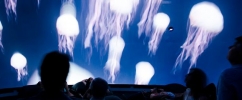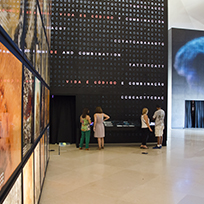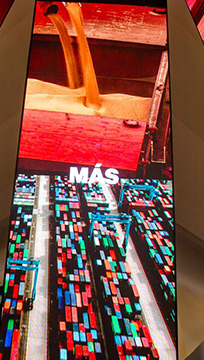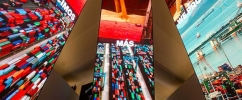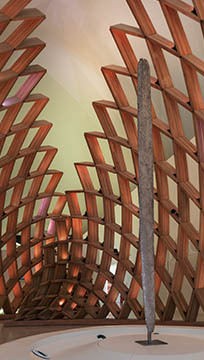Tomorrows
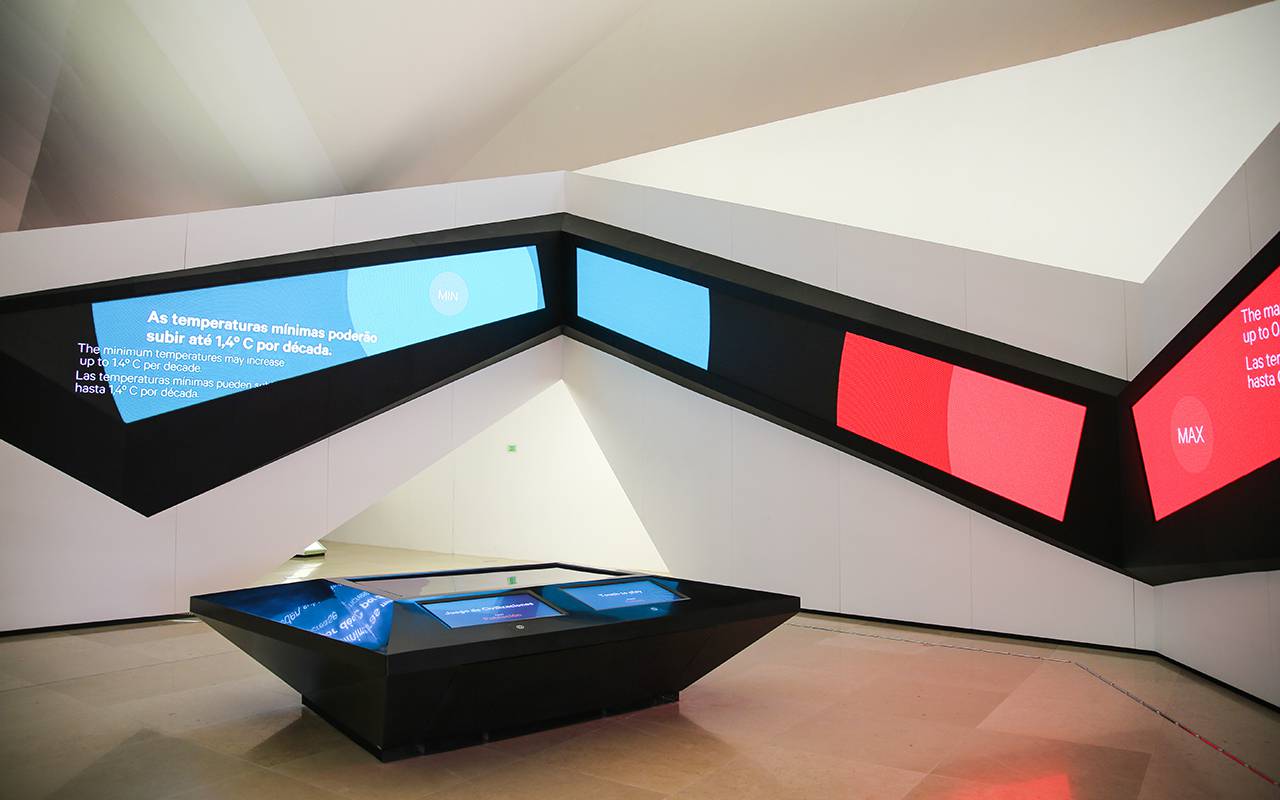
Once they’ve pondered the reality of humankind today, visitors move on to explore tomorrow. This fourth area, Tomorrows, looks at trends over the next 50 years and the possible resulting scenarios. The exhibition aims to help visitors understand that these outcomes are the results of our actions today. Visitors are encouraged to pose the questions, “How are we going to live on the planet? How can we coexist? What will become of us? How will society deal with these tomorrows?”
The exhibition weaves together six major trends that will shape the coming decades, and which are the focus of the museum: climate change, alterations in the environment, growing population and increased life span, greater cultural and regional integration and differentiation, advances in technology and expanded knowledge. The exhibit explores the development and consequences of these trends through topics such as connected cities, energy production, genetic modification, bioethics, integration of technology and the human body, and the effects of climate change, migration, population density and social inequality, among others.
The layout of the Tomorrows area is like a tri-fold work of origami. The three sections are the Planet, the Society and Human Beings. Displays use audiovisual elements to portray trends and scenarios, and interactive activities give visitors a sense of their role as an agent of change in building the future. The simulations and projections are based on studies and data from scientific institutions.
“How many planets would we need to support mankind if everyone had the same standard of living?” This is the question posed to visitors in the first section of the origami figure, the Planet. The answer lies in the calculations of the impact of each individual’s lifestyle and consumer behavior: the Ecological Footprint, a data-driven metric provided by the nonprofit organization Global Footprint Network.
In the Civilizations game, developed by SuperUber, and based on an algorithm from NASA, four players work together to ensure sustainability for a virtual civilization with the available physical, population, financial and natural resources. Players see how their decisions can drive the world toward or away from extinction. In the third area the game ‘Tomorrow’s Human’ uses humor to spark players’ imaginations. Depending on their approach to the challenges of tomorrow, players are classified as choleric, phlegmatic, sanguine or melancholic, according to the ancient Greek medical theory of the four humors, or temperaments.

